At the corner of Andrássy Avenue and Dobó Street, there was a two-story building before the 1870s, which was demolished due to the construction of Sugárút [Avenue], and the plot was offered for sale. The plot was bought by Lajos Krausz, the manager of the Gizella Steam Mill and the Krausz-Mayer malt and spirit factory, in 1882. The 336-square fathom plot was acquired by the well-known manufacturer for 150,200 HUF. After the purchase, he commissioned the young architect, Zsigmond Quittner, who already had references on the other side of Sugárút, to design his palace, which included his own home.
A notice published in the 4 February 1884 issue of Építési Ipar reveals that the application for a building permit was judged in 1884 (Andrássy Avenue was then officially called Sugárút, and the plot was numbered 20), and among the official annual reports of the Public Works Council, we can read that the construction of Lajos Krausz began in 1884 on the plot bounded by Révay Street, Dobó Street and Sugárút 20.
The facade of the Krausz Palace, photographed by Károly Divald in 1885 on Sugárút, which was renamed Andrássy Avenue a year later (Source: Az Építési Ipar, 27 December 1885)
"There would not be many more masters of the house, whose diligence and willingness to sacrifice would enable our architects to use sister arts for higher architectural decorations"
- writes the designer of the building about the builder in 1885 in the 52nd issue of Az Építési Ipar on the occasion of the completion of the palace.
Cross-section of the building made by Zsigmond Quittner (Source: Az Építési Ipar, 27 December 1885)
The facade of the building facing Andrássy Avenue received a very rich design, while those facing the side streets (Dobó Street and Révay Street) are much more modest. On the main facade, the lunettes on the first floor show the allegories of the Edenic and the Heroic, as well as the Renaissance and the Modern. Also on this floor, above the central window, there are two titular figures. And the pairs of statues on the third floor refer to the civic virtues: starting from the left, we can see the embodiments of loyalty and love, hospitality and wealth, harmony and strength, peace and work. Gyula Donáth made the sculptural decorations of the facade and the well relief "Incselkedők" in the inner courtyard. The young József Róna worked with him on the design of the facade, and in his memoirs he writes about the beginning of the work as follows:
"Donáth received a larger commission for the sculptures of the Meier-Kraus Palace in Andrássy-Avenue, which had to be carved out of sandstone. The sketches were already completed and the clay models were made in half size. When I arrived in Pest, his letter was already waiting for me. We got to work right away."
The well relief of the inner courtyard of the Krausz Palace, by Gyula Donáth (Source: FSZEK Budapest Collection)
"The elaboration is also artistic, original, beautiful in terms of conception and monumental, in harmony with the style of the building and can be said to be truly excellent in terms of its effect even at a significant height"
- Quittner writes about the design of the facade in his already mentioned article.
Károly Lotz contributed to the decoration of the building, who created not only the indoor frescoes, but also the sgraffito in the inner courtyard, and the mosaics praise the work of Luigi Depol.
According to the traditions of the time, the owner and his family lived on the first, main floor of the palace. On the second and third floors, rental apartments were created, and there were shops on the ground floor.
The facade of the Krausz Palace from 1890 (Source: FSZEK Budapest Collection)
It is interesting that Quittner omitted the design of open corridors when designing the palace with an inner courtyard.
"Two main staircases on the left and right sides of the courtyard, each of which leads directly to the entrance hall of two apartments on each floor. From this hall, doors lead to almost every room of the apartment: the kitchen, bathroom, two closets, pantry, etc."
- Zsigmond Quittner writes about the floor plan of the building in the already mentioned issue of Az Építési Ipar.
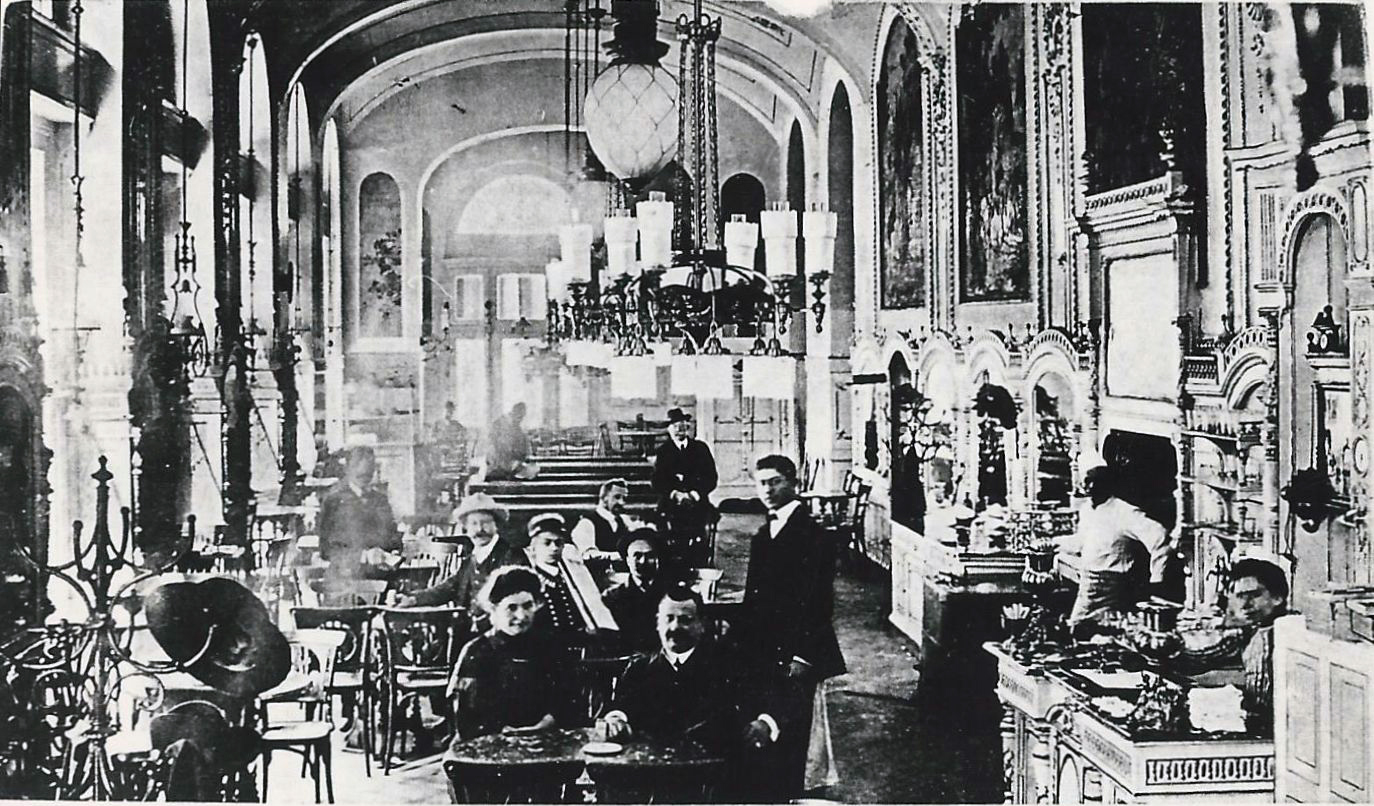
The interior of the Szalon Coffee House
In 1898, the well-known Szalon Coffee House (later Piccadilly) moved into the palace, but this palace also housed the famous Magyar Korona Coffee House until the early 1930s. According to the 1914 Budapest Address and Housing Register, the building was already owned by the Budapest Board of Trade.
Magyar Korona was one of the best catering establishments in the area, frequented by merchants, prosecutors, doctors, lawyers and officials, but it was also a favourite place for Nyugat editors and authors.
"There are only one or two places in Budapest where you can enjoy the silence that inspires the sweet smile of peace. Such is the Magyar Korona Coffee House on Andrássy Avenue. The crème de la crème of Hungarian writers, the Nyugatists led by the silver-haired Ernő Osváth, come here with unchanging love, the famous Lajos Kassák, Oszkár Gellért, Zsigmond Móricz, Jenő Tersánszky Józsi and Ernő Szép. They talk, write, edit. There are arguing young people and contemplative old people here.”
- these words of appreciation were written in Ujság in December 1927.
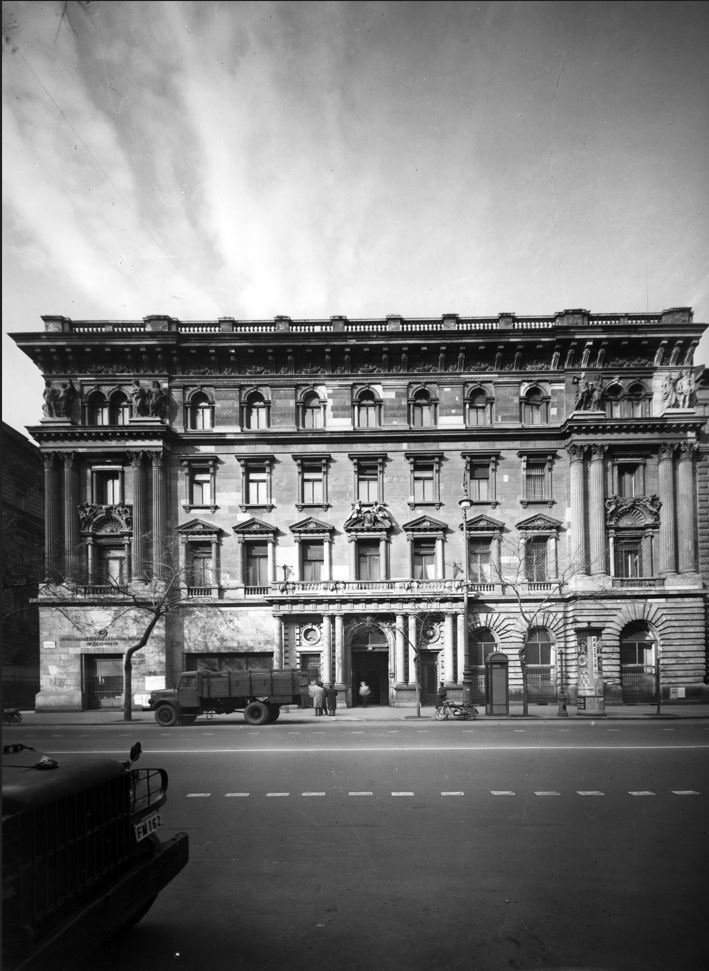
The main facade of the Krausz Palace in a photograph from 1958, at that time under 12 Népköztársaság Road. (Source: Fortepan/Reference No.: 103028)
In the special rooms of the Magyar Korona, even sports people found their entertainment: a first-class ping-pong table awaited those interested.
Despite the fact that it was one of the most popular coffee houses, despite the fact that it attracted the most important figures of the art world, the Uj Nemzedék already informed on 20 February 1934 that the furniture of the coffee house was auctioned off.
"Recently, a coffee house has been closing down almost every day in Budapest. The reason for the downfall of the coffee houses is always the same: rent arrears, tax arrears and impatient private creditors. This afternoon, the equipment of the Magyar Korona Coffee House at 12 Andrássy Avenue will be auctioned off. This old coffee house in Andrássy Avenue changed owners last year, but that did not help either. In December, enforcement was already carried out against the new owner and the marble tables, chairs and the entire equipment of the coffee house were seized in the value of 1,680 pengos."
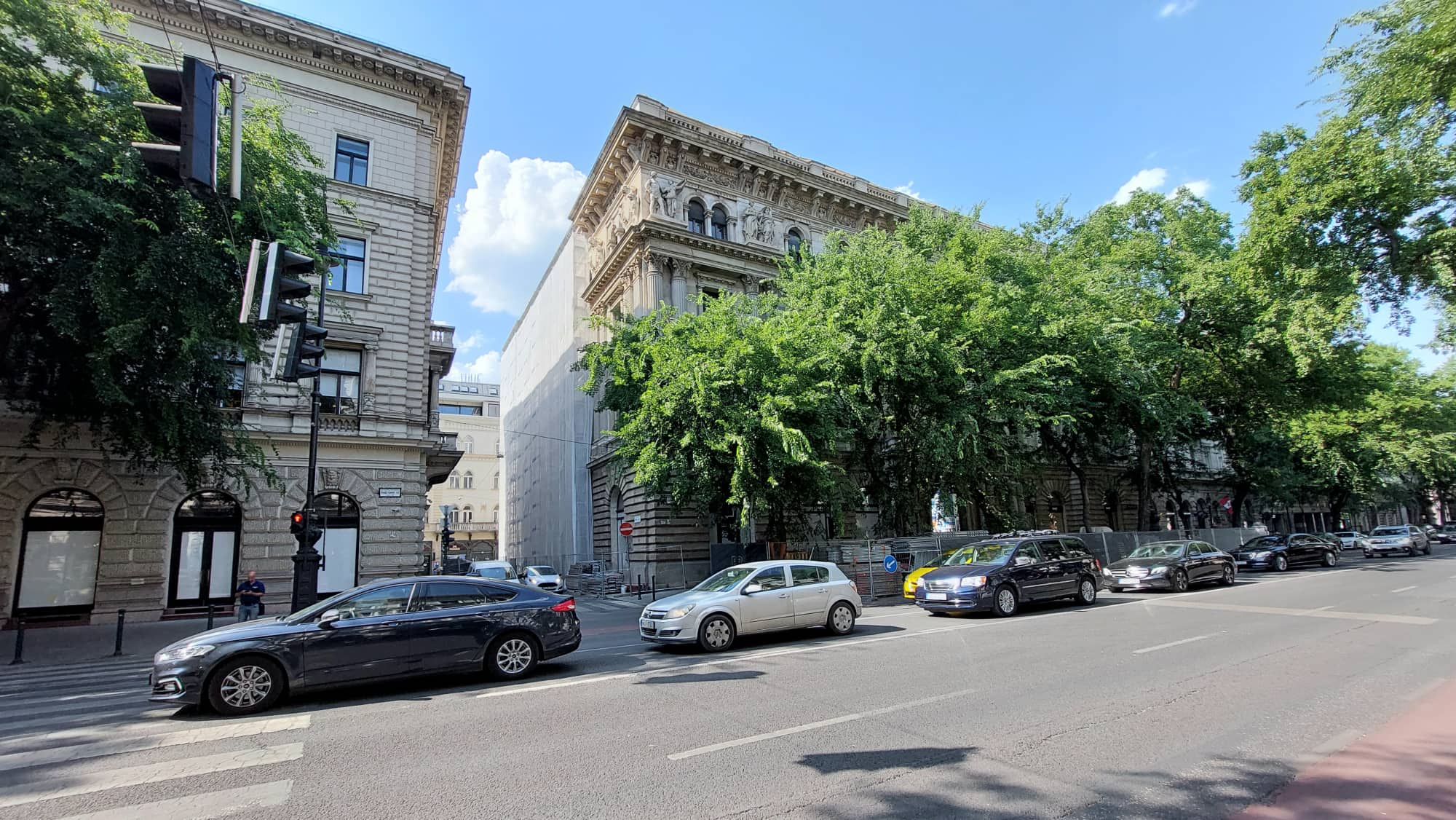
Today, trees cover the Andrássy Avenue facade of the Krausz Palace (Source: Balázs Both/pestbuda.hu)
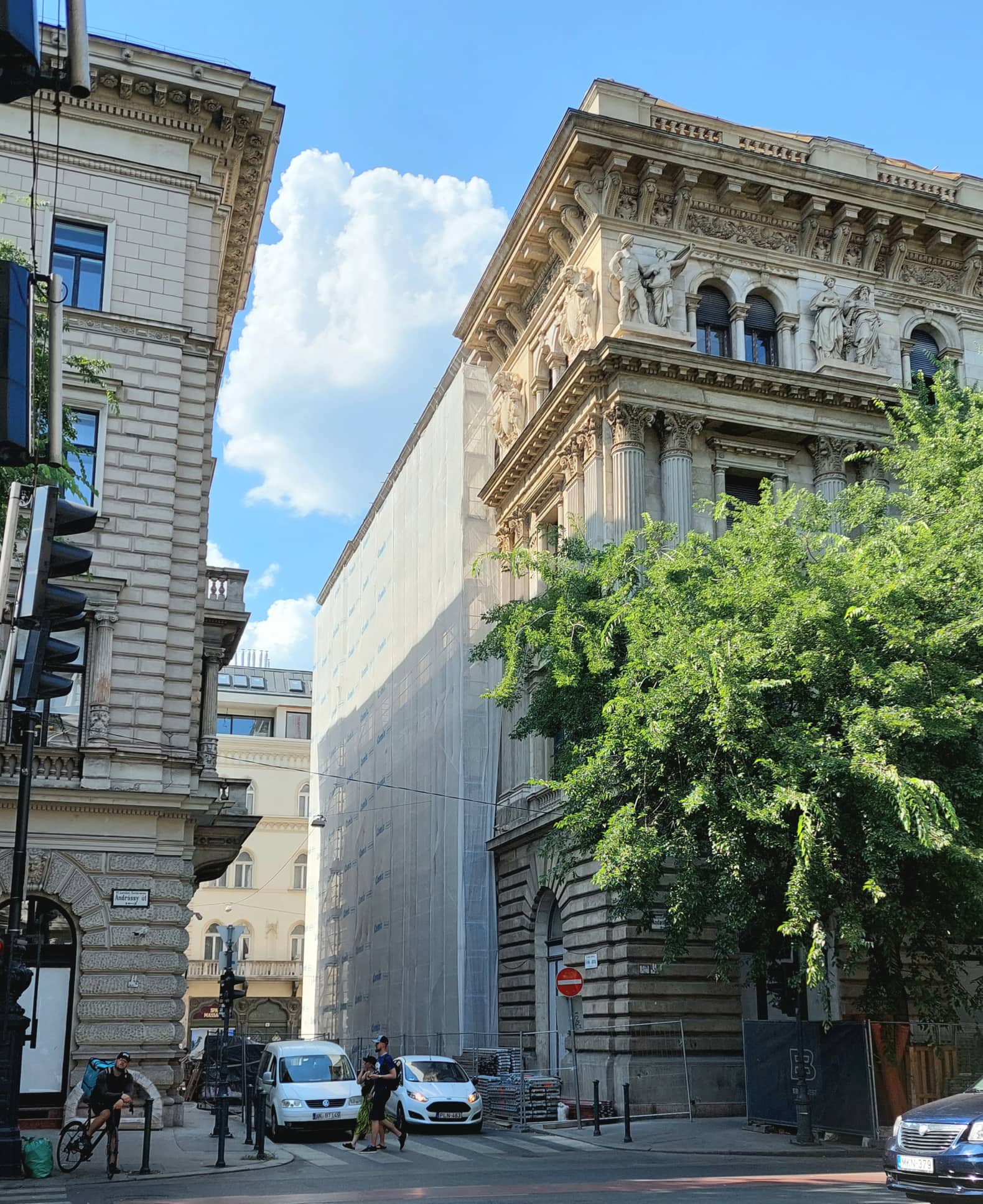
The palace is currently under renovation (Source: Balázs Both/pestbuda.hu)
After World War II, the palace was transferred to the Budapest Police Headquarters. The building, which was in a very deteriorated condition, was partially renovated in 1960-1962.
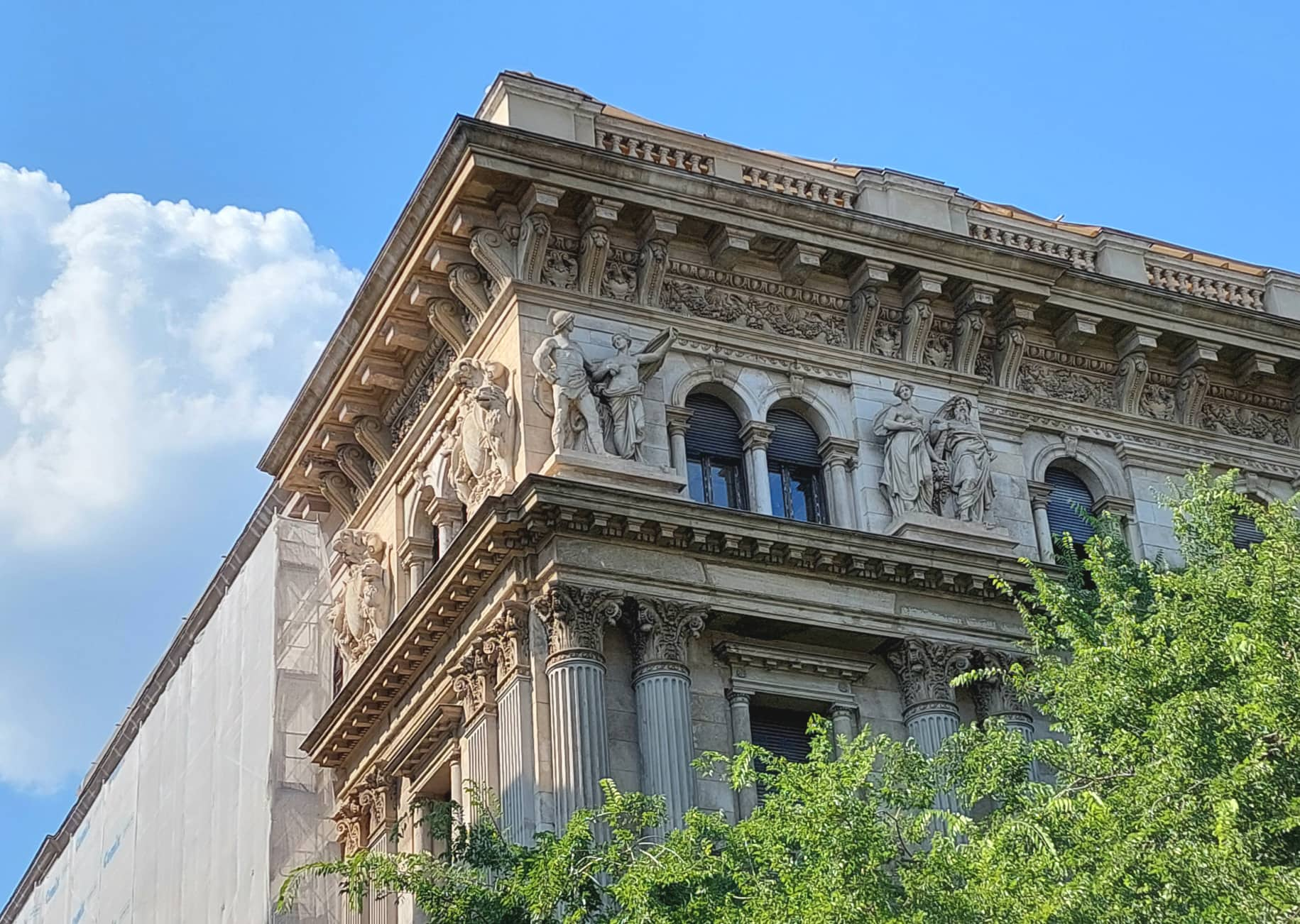
Detail of the facade: the pairs of statues on the third floor (Source: Both Balázs/pestbuda.hu)
Then in 2002, it underwent a major renovation, when it was converted into an office building. Due to its exceptional artistic value, the famous sgraffito inner courtyard was given a glass roof to protect the works there from the vagaries of the weather.
The building is currently under renovation, after completion it will function as an office building. A new entrance will be created on the ground floor, the sgraffito decoration in the inner courtyard will be restored, and the 'Incselkedők' well statue will also be renewed. During the works, the mechanical and ventilation system will also be modernised. Renovation work began in 2021 and is scheduled to be completed this year.
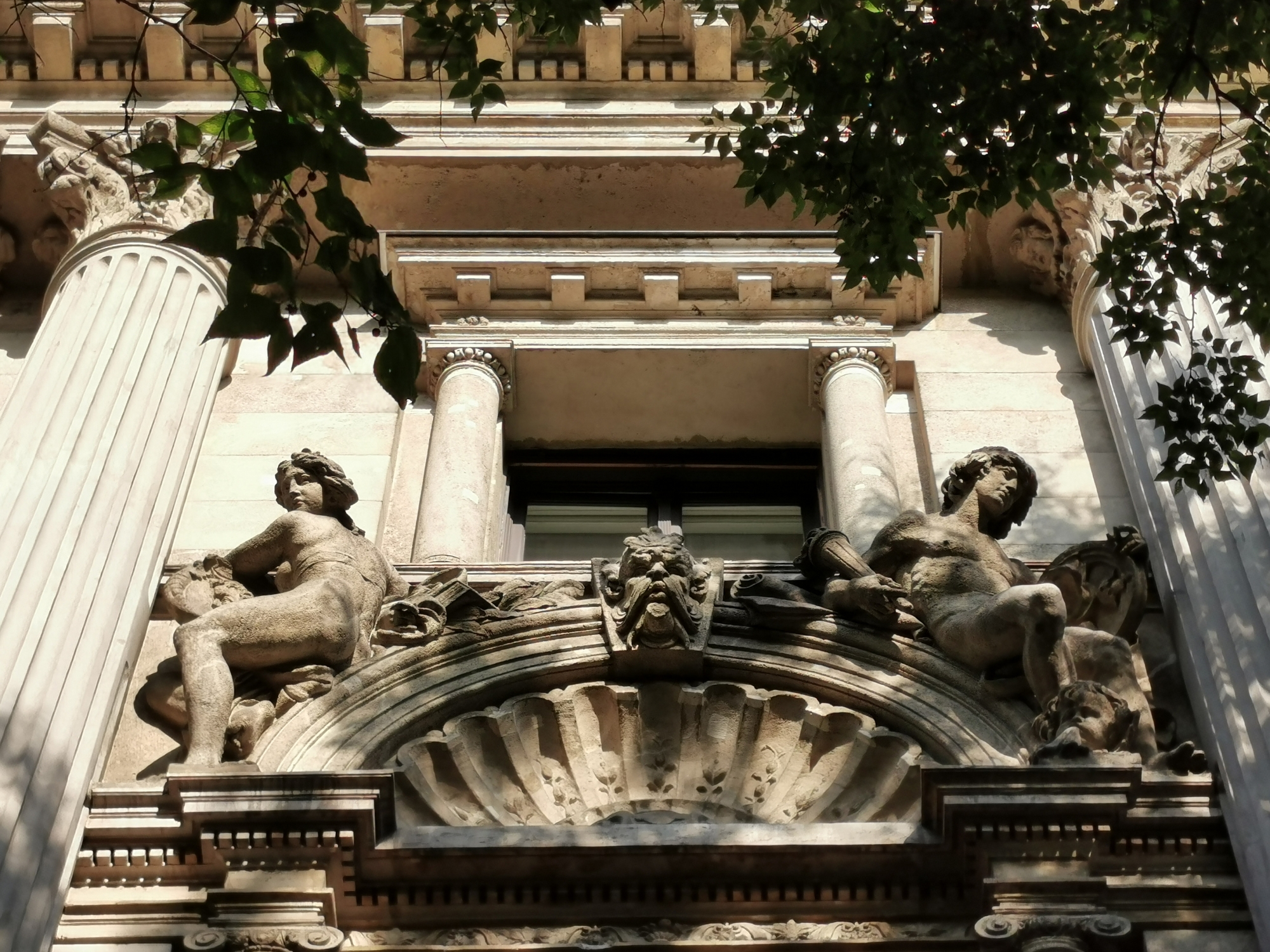
Detail of the facade of the palace (Source: krauszpalota.hu)
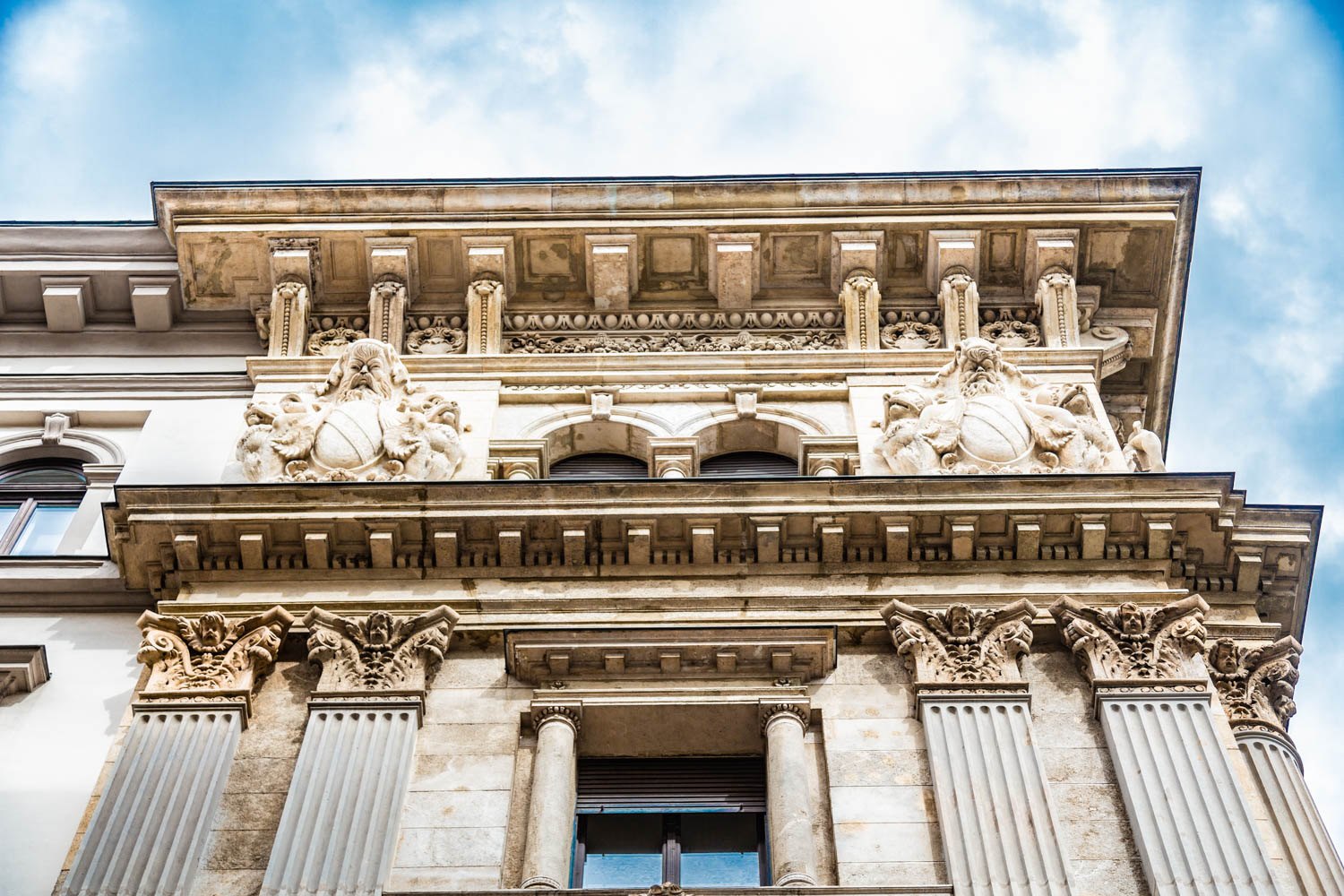
Detail of the facade of the palace (Source: krauszpalota.hu)
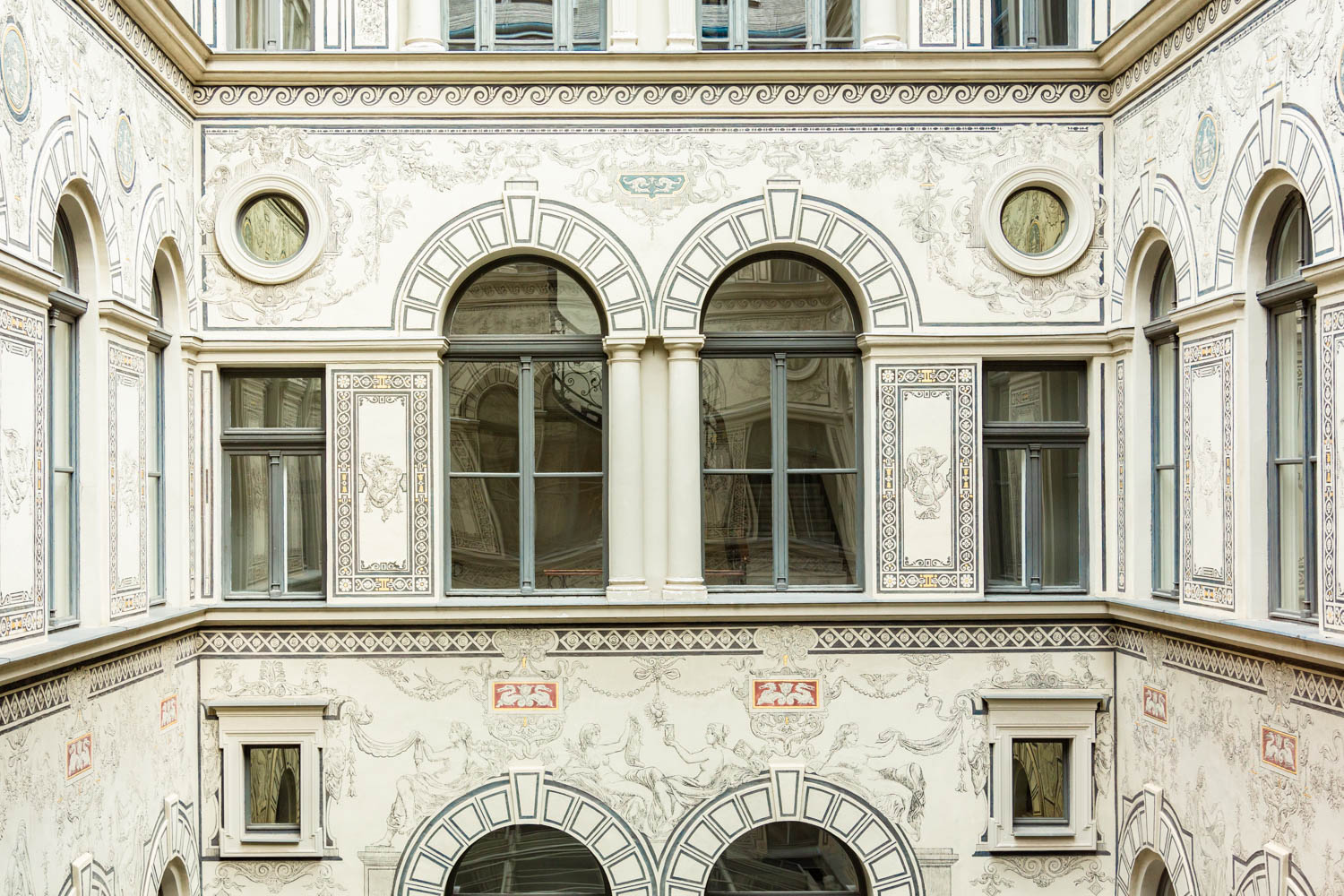
The inner courtyard decorated with sgraffito (Source: krauszpalota.hu)
The renovation of the buildings on Andrássy Avenue has recently accelerated. The renewed Opera House opened in March this year, and the works were completed in the former Haggenmacher Palace (52 Andrássy Avenue) at the beginning of June. The end of the renovation of the Dreschler Palace (25 Andrássy Avenue) opposite the Opera is planned for this year, as well as of the rental palace 47 Andrássy Avenue and the Hübner Courtyard on Kodály körönd (92–94 Andrássy Avenue). In the near future, the MÁV apartment building (88–90 Andrássy Avenue) will be reborn here, and the reconstruction of the burned down MÁV apartment building (83–85 Andrássy Avenue) will soon be completed. The renovation of the former MÁV headquarters (73–75 Andrássy Avenue) is also expected, but the renovation of other palaces on Andrássy Avenue is also underway.
Cover photo: The facade of the Krausz Palace facing Andrássy Avenue in 1890 (Source: FSZEK Budapest Collection)

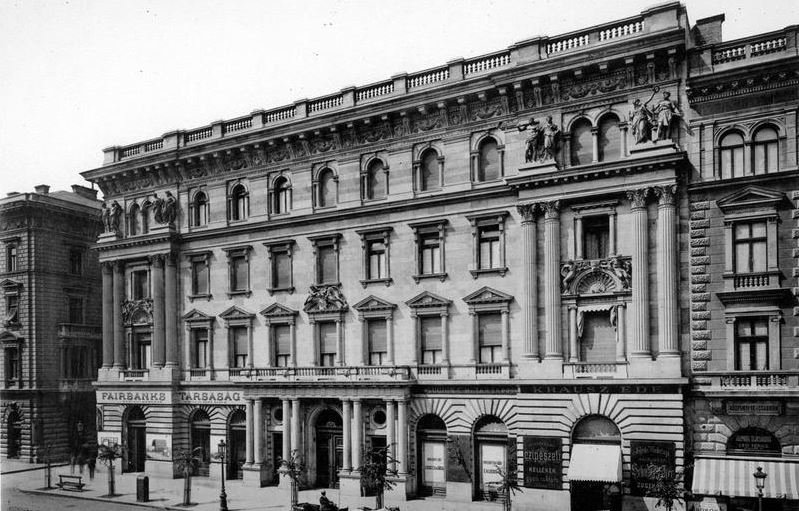


































Hozzászólások
Log in or register to comment!
Login Registration